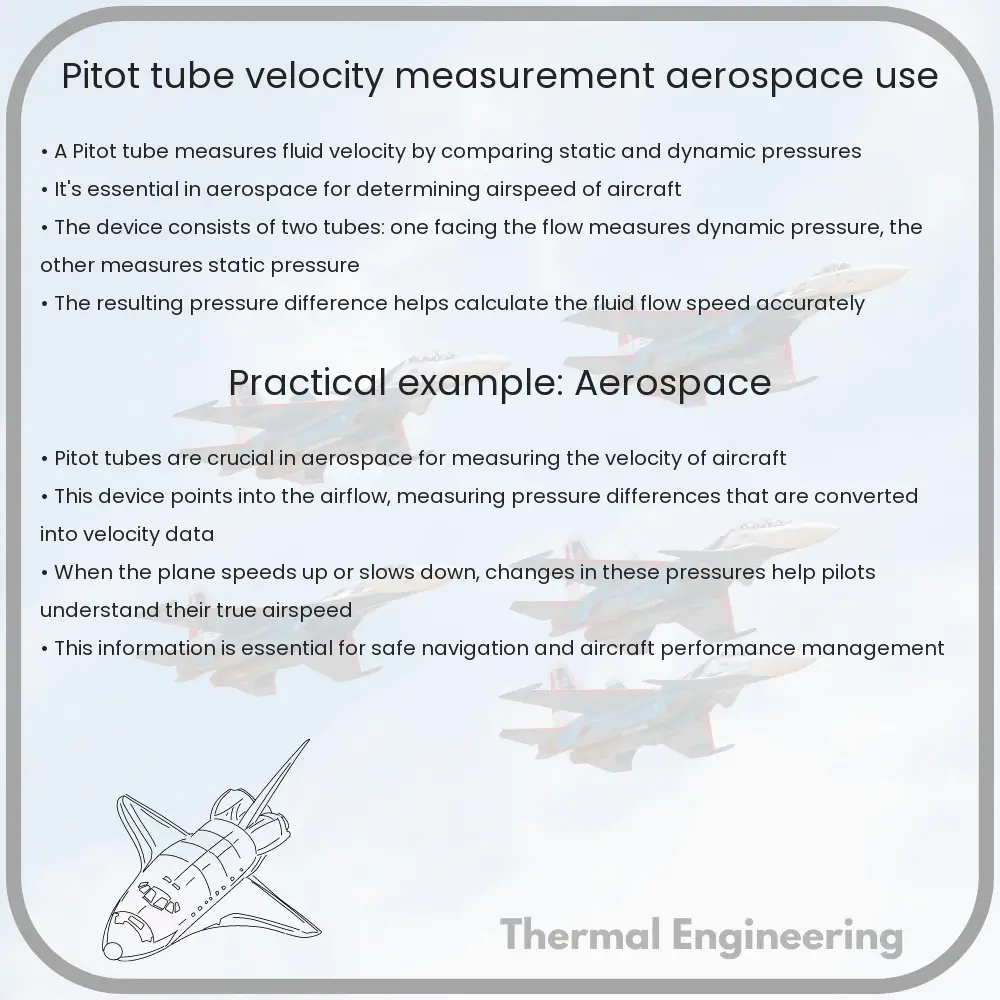Learn about the Pitot tube, a crucial instrument in aerospace engineering used for measuring fluid velocity and airspeed.

Understanding the Pitot Tube: A Critical Tool in Velocity Measurement and Aerospace Engineering
The Pitot tube is an essential device used in the field of aerospace engineering for measuring fluid velocity. Invented by the French engineer Henri Pitot in the early 18th century, the technology has evolved considerably but the basic principles remain largely unchanged. Today, it is most commonly seen on the exterior of aircraft and boats, where it serves as a critical component in measuring airspeed and navigational control.
How Does a Pitot Tube Work?
At its core, a Pitot tube measures fluid velocity by converting the kinetic energy of the flow into potential pressure. It consists of a tube pointing directly into the fluid flow; as the fluid enters the tube, it is brought to a rest, or stagnates, leading to an increase in pressure. This pressure, known as stagnation pressure, is then compared to the static pressure of the fluid to determine the velocity.
Essentially, the Pitot tube works based on Bernoulli’s Principle, which states that an increase in the speed of a fluid occurs simultaneously with a decrease in pressure or a decrease in the fluid’s potential energy. The fluid velocity can be quantified using the equation:
v = sqrt(2 * (P0 – P) / ρ)
Where:
- v is the fluid velocity,
- P0 is the stagnation pressure,
- P is the static pressure, and
- ρ is the fluid density.
Applications in Aerospace
In aerospace, Pitot tubes are primarily used for measuring the airspeed of aircraft. This is critical not only for safe operation but also for efficiency and performance monitoring. Airspeed indicators linked to Pitot tubes provide pilots with essential information to help make real-time decisions regarding altitude, speed, and aircraft handling.
A Pitot-static system combines the functions of the Pitot tube and static ports. While the Pitot tube measures the dynamic pressure of the airflow, the static ports measure the ambient air pressure. This combination allows for more accurate calculations of various flight parameters including airspeed, altitude, and vertical speed.
Challenges and Considerations
While the Pitot tube is a reliable instrument, it is not without its challenges and limitations. One of the primary concerns in its use is the potential for blockage. Ice, insects, or other debris can block the tube, leading to inaccurate readings or failure. Modern aircraft are equipped with systems to heat the Pitot tubes to prevent icing.
Accuracy can also be affected by the placement of the tube. Incorrect placement where air flow is turbulent or disrupted can lead to erroneous readings. Engineers must meticulously consider the location and exposure of Pitot tubes when designing and maintaining aircraft.
Conclusion
Despite its simplicity, the Pitot tube is a fundamental instrument in aerospace engineering, providing critical data for safe and efficient air navigation. Continued improvements in design and technology are enhancing the reliability and accuracy of this important tool, ensuring its role in aerospace for years to come.